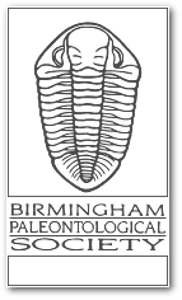A roadcut in St. Clair County was a real bonanza for BPS on this trip. A smaller crowd than usual came along but found a very wide variety of fossils. Excitement all around as we spread out along the road cut. This is a Mississippian age site where geologic uplift is obvious. Several varieties of coral, including quite a few large horned coral, brachiopods and sponges were found in the Ft. Payne chert and Tuscumbia Limestone. A lot of trilobites were being found; Greg and others started breaking open some well-weathered rocks, and almost every rock contained a treasure-trove of fossils: horn corals, sponges, trilobites, bryzoan, and some as-yet-unidentified items. One of the most exciting finds was the large straight cephalopod found by Bob (and naturally, we all gravitated to the same collecting area to find THE REST OF IT, but alas, no more, not even tiny pieces, were to be found). Leisa and Becky had been surveying a different area, and spotted some more shell, coral and trilobite fossils in an area we had not collected before. After a late lunch at a local BBQ, some of the crew took off on a scouting trip, while others made their way home.
--Edited by Vicki Lais
(Photos courtesy Becky Guthrie and Vicki Lais)
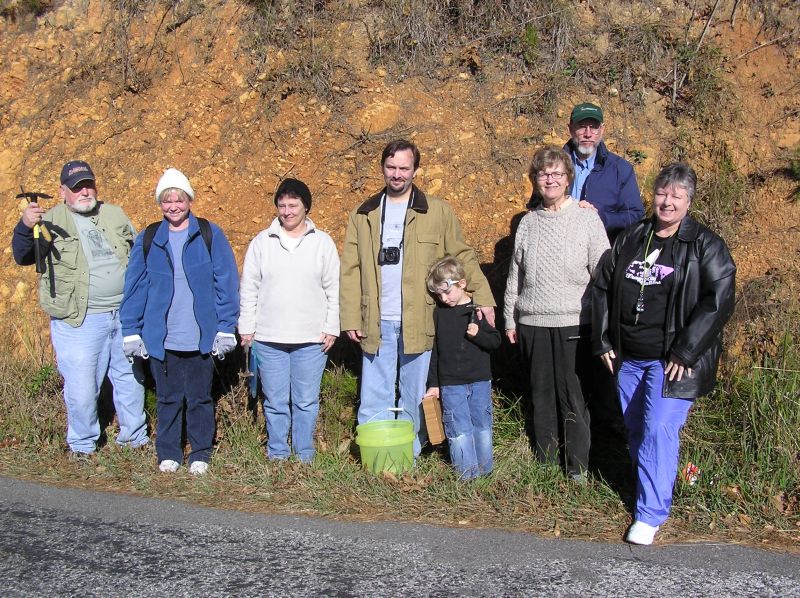
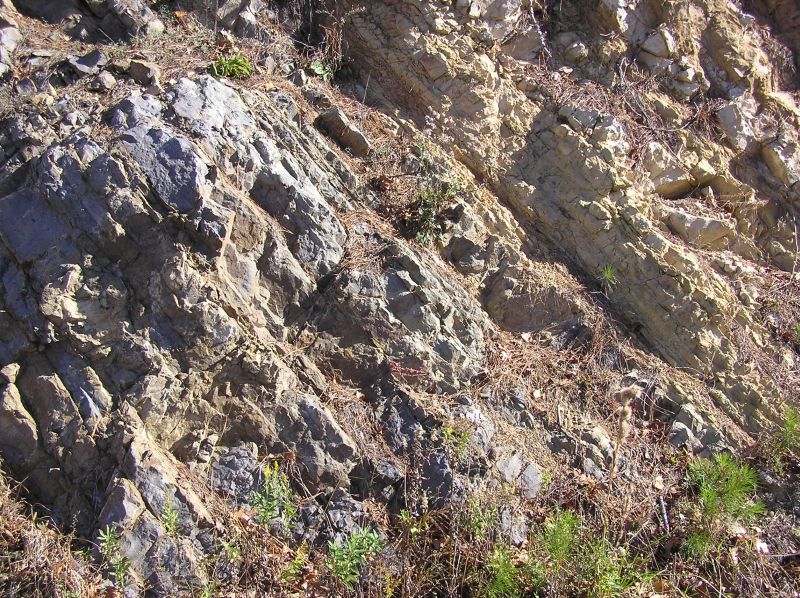
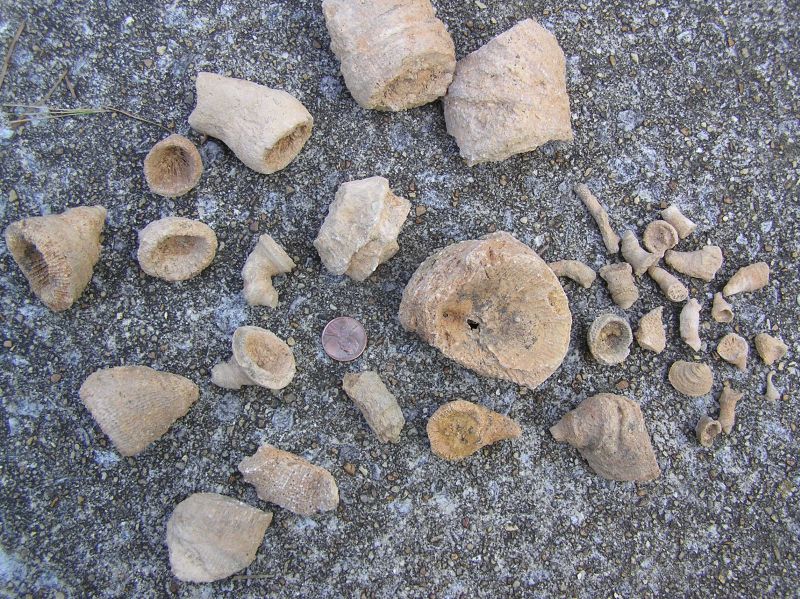
The most common fossil at this location is coral.
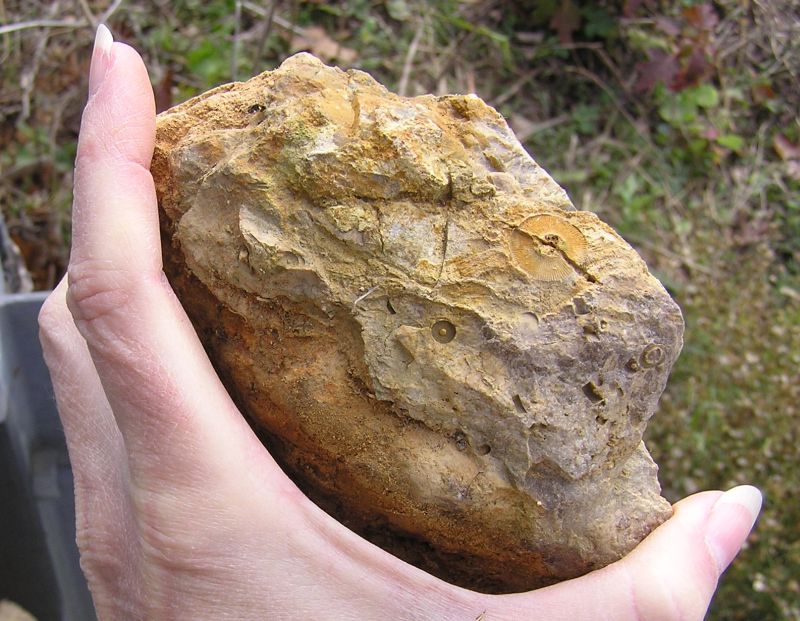
Crinoids are also found.
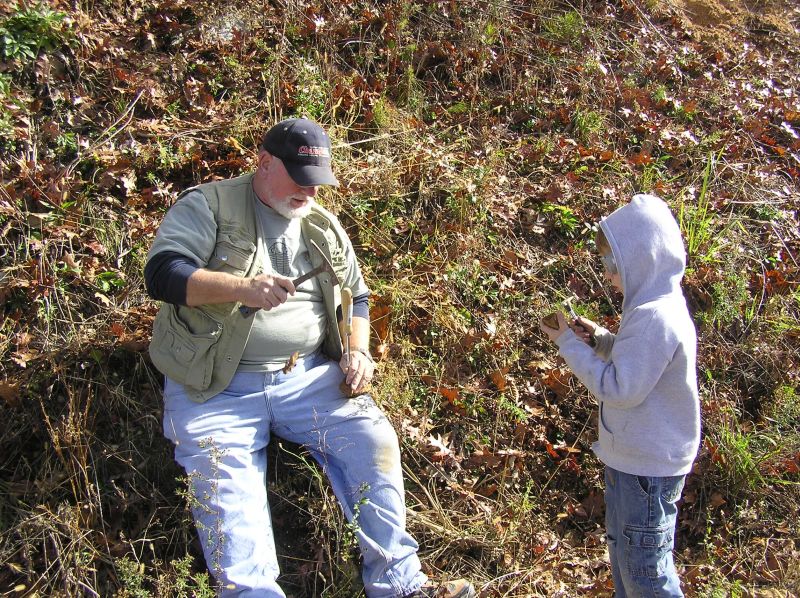
Greg shows Nathan how to crack the rocks to find the fossils inside.
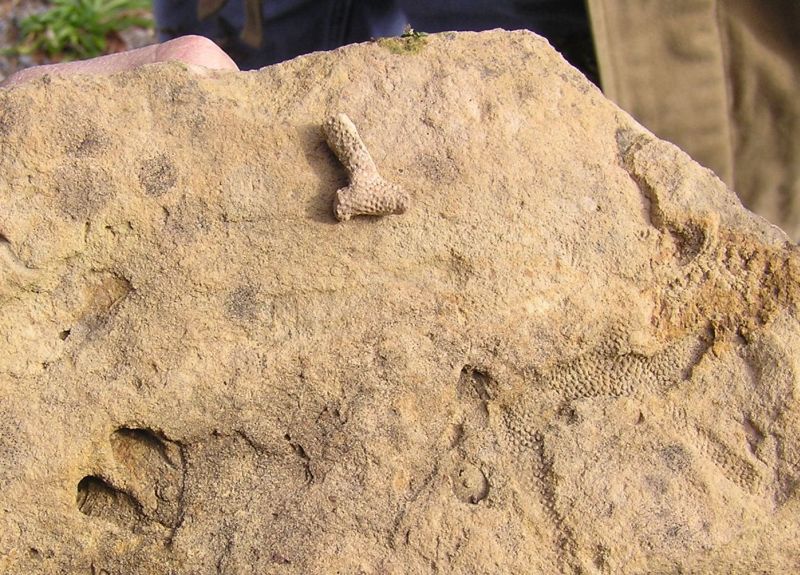
Nice bryozoan impression and actual fossil remains.
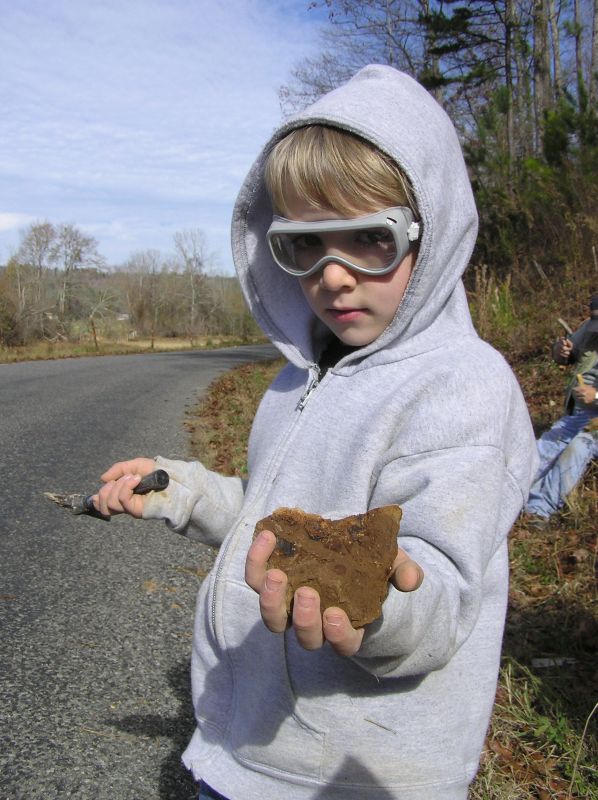
Nathan has found fossil brachiopods. Click picture for closer view.
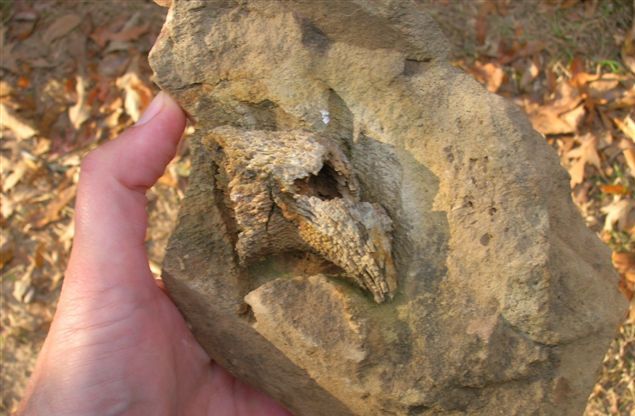
An interesting piece of horned coral, laying loose in a hollow shaped like it. This specimen has obviously been weathering in this same location for many years.
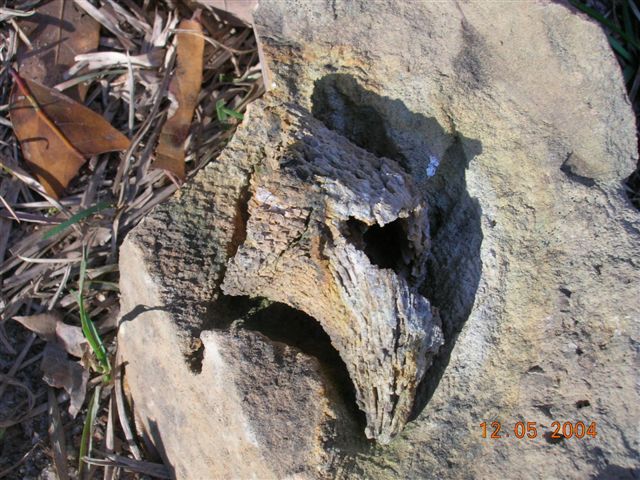
Another view of the horned coral.
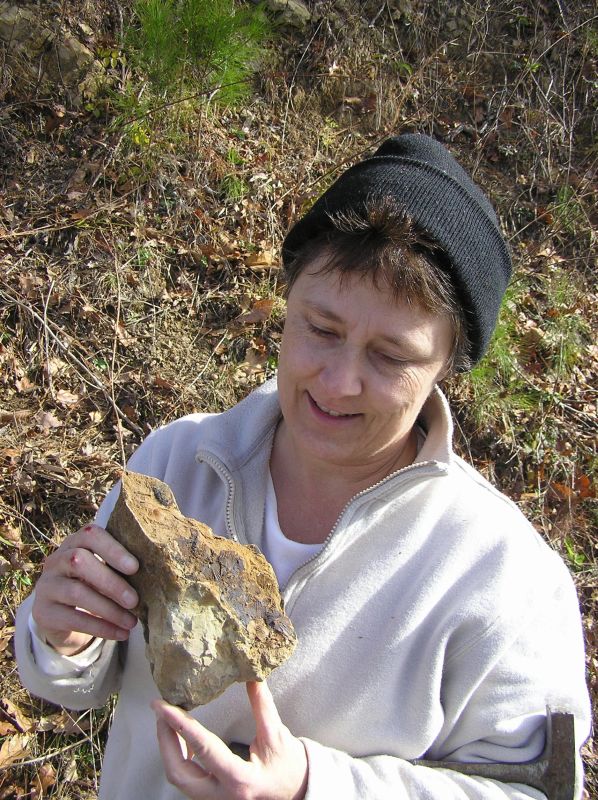
Becky also has a nice slab of brachiopods.
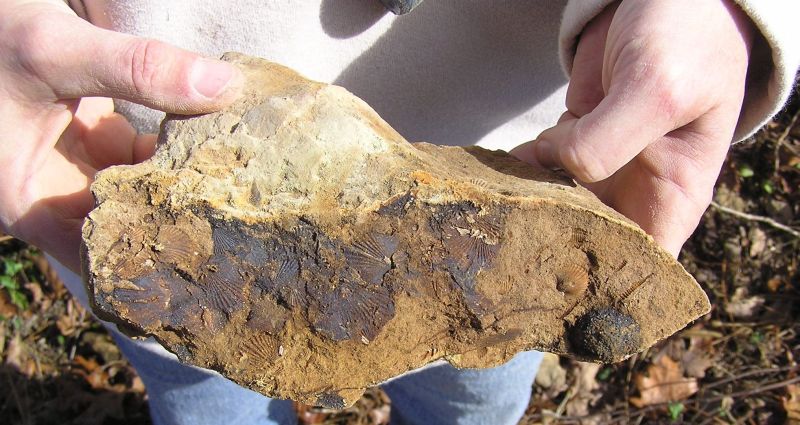
A closer look at Becky's slab.
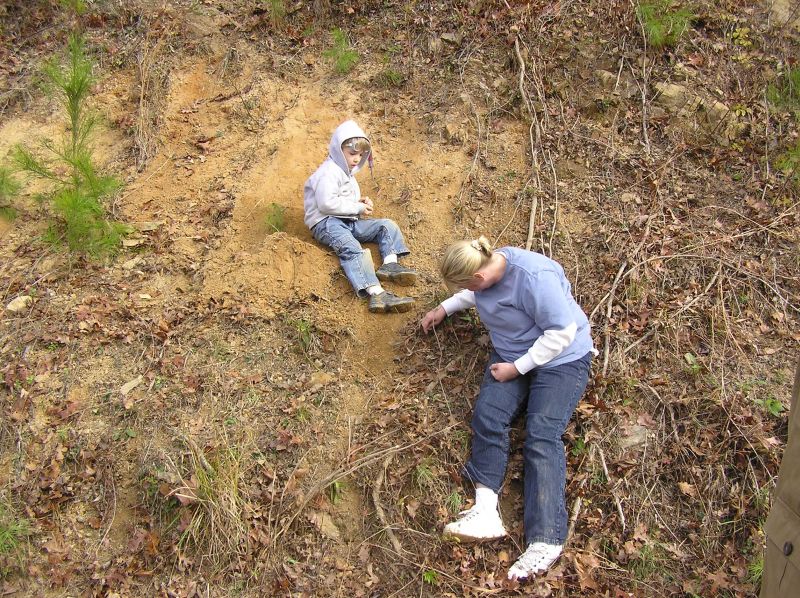
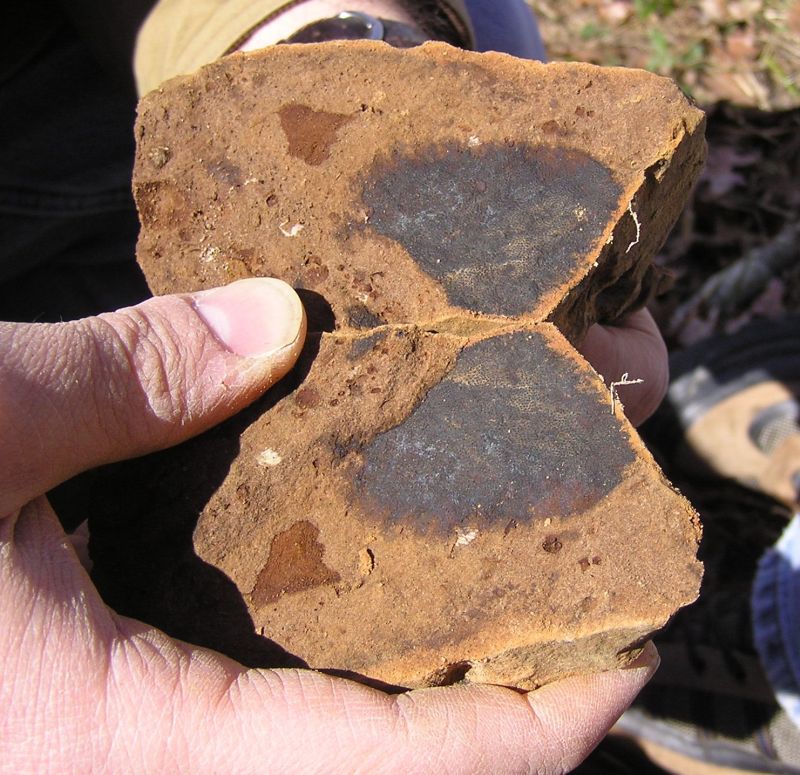
Nice sponge; at higher resolution, the pores are easily visible.
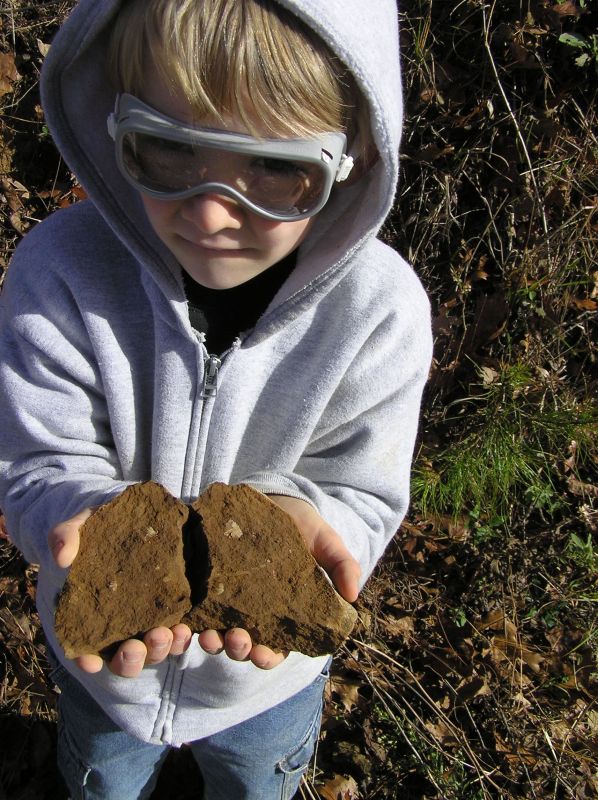
More brachiopods.
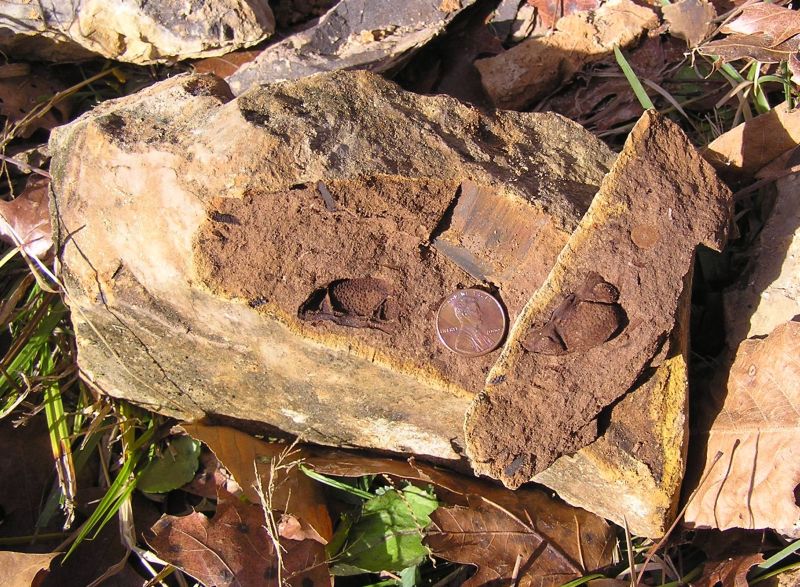
And here's what we were hoping to find - trilobites!
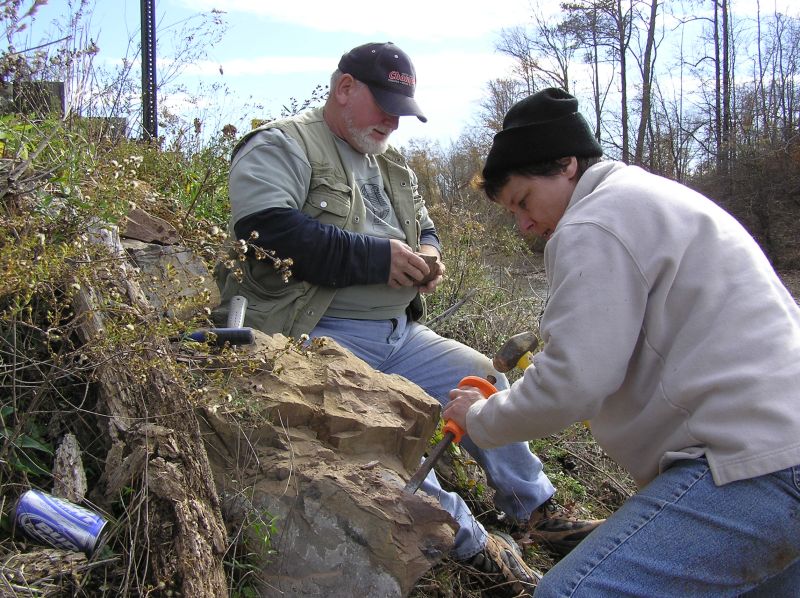
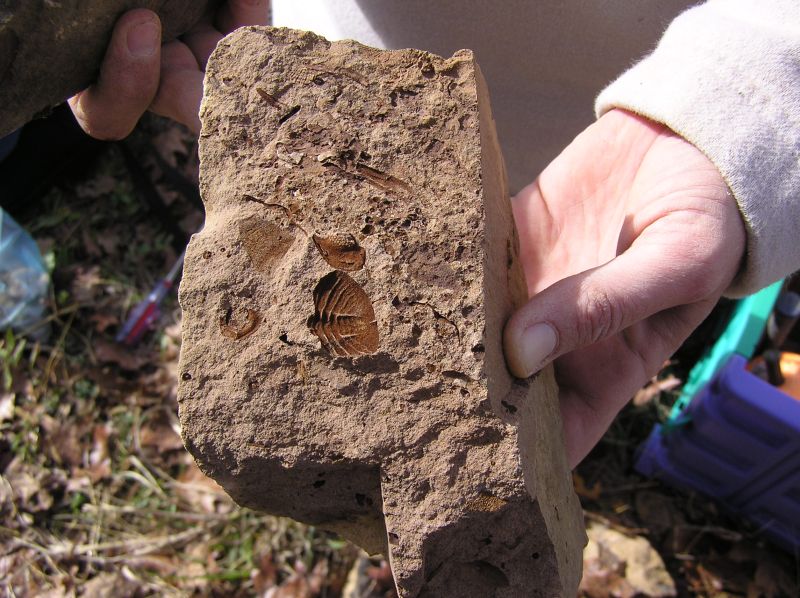
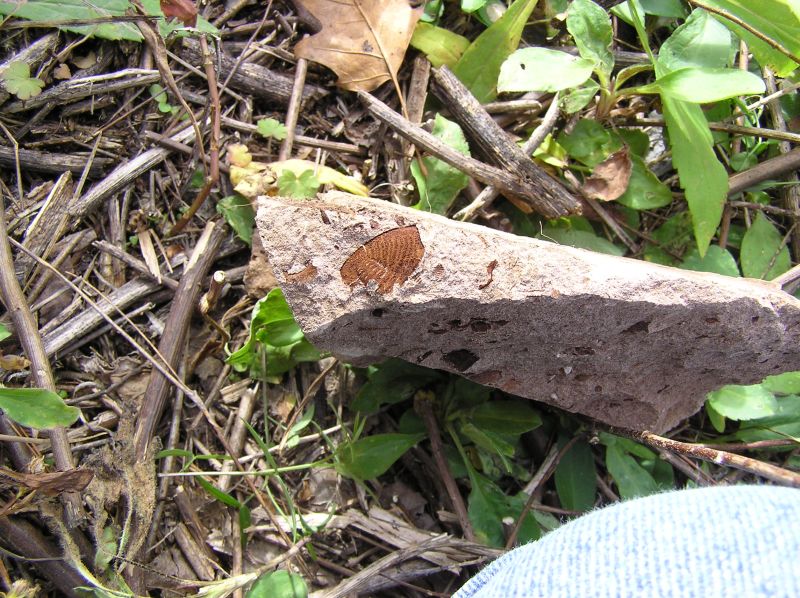
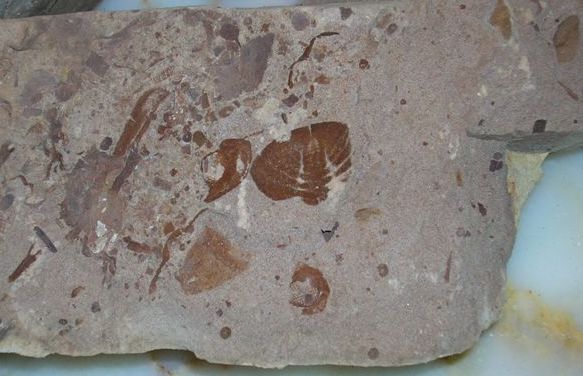
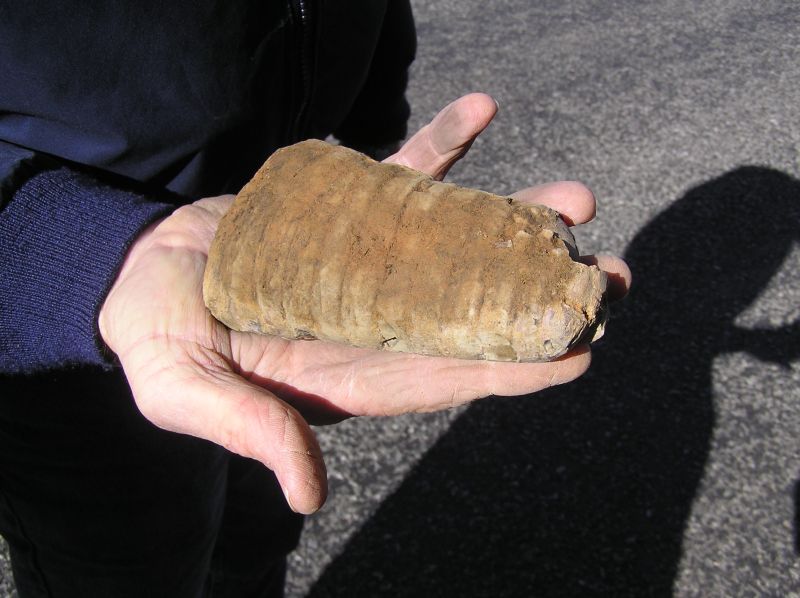
As nice as the trilobites are, this straight cephalopod was the find of the day!




















